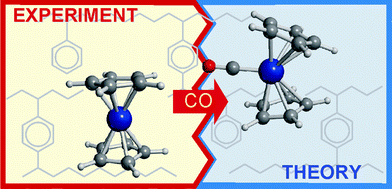Chromocene in porous polystyrene: an example of organometallic chemistry in confined spaces†
Abstract
In this work, we present an innovative approach to investigate the structure and the reactivity of a molecularly dispersed

- This article is part of the themed collection: Celebrating the centenary of the Italian Chemical Society

 Please wait while we load your content...
Please wait while we load your content...